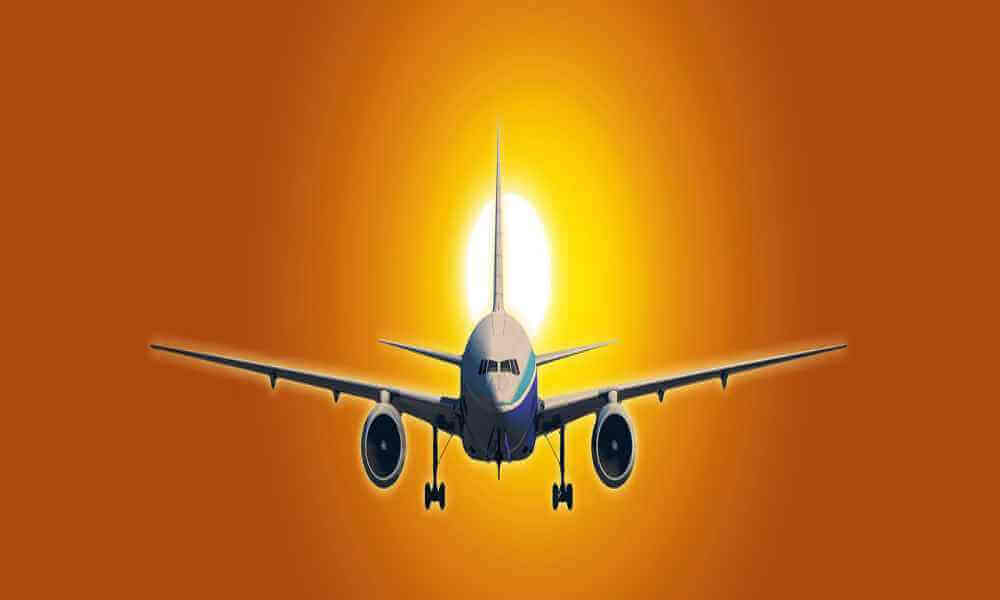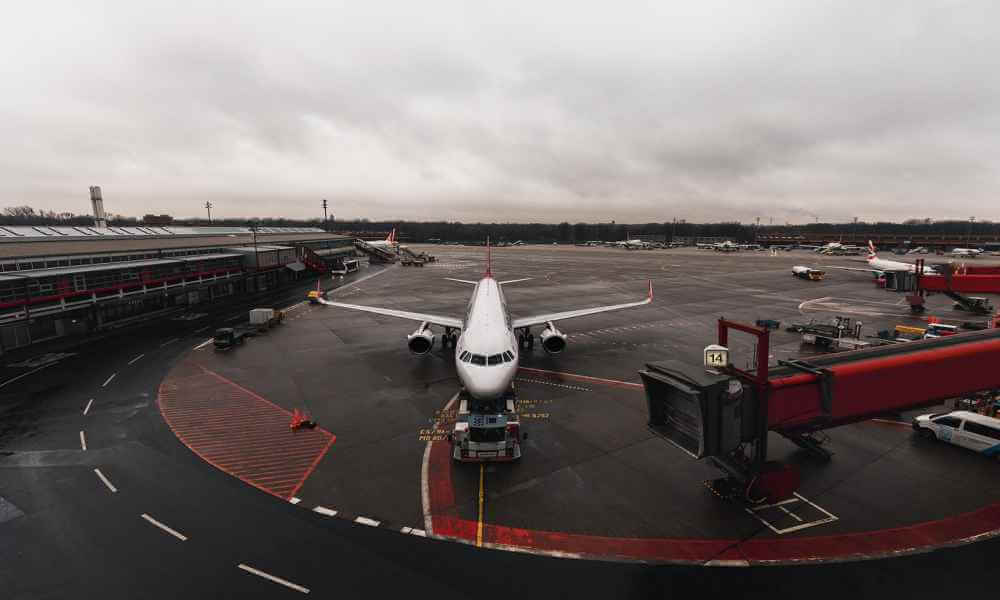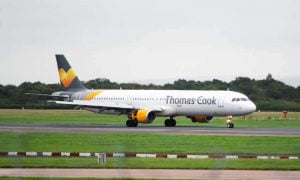Challenges facing by Global Aviation Industry: These may be in the form of safety and security, global competition, ever changing technological landscape or sustainability of the individual airlines, which collectively contribute to the overall health of aviation industry. This module shall focus on various issues and challenges faced by the global aviation industry. The module also shall briefly discuss the future prospects of the aviation industry worldwide.

Challenges Facing by Global Aviation Industry
A. Global Economic Environment
Economic health of the country or region largely determines the direction in which aviation industry is moving. Regions with thriving economies have been found to be better markets for commercial aviation.
Also thriving economies ensure better spending power among the consumers making civil aviation a beneficiary of this trend. However, these trends are not uniform in all regions of the world. While some regions experience better growth, some other regions have constantly shown negative growth in the aviation industry owing to poor growth of the economy.
The illustration below highlights some of the recent trends in civil aviation in various continents. The above illustration shows the Continent wise Profitability Index of Airlines from various continents. Profitability of individual airlines can considered as a significant indicator of the overall aviation industry’s performance in the region. While, North American, Middle Eastern, European and Asian aviation markets are showing consistent growth, the Latin American and African markets show a negative growth in the aviation industry.
This trend could be due to various reasons such as the cyclical nature of business, slowing down of global economy, uncertainty of fuel prices, technology, environment and slow pace of liberalization. These factors continue pose as challenges to the growth of aviation industry.
B. Safety of Passengers and Cargo
Aviation in the present times is far safer due to technological advancement in aircrafts and operations. In aviation industry, whether it is on the part of aircraft manufacturers, airlines or airports, safety of passengers and cargo is of paramount importance.
It has been a constant endeavor on the part of these stakeholders to make flying even safer in the days to come. However, despite the advanced technology being used in the aviation industry, it is not spared from accidents causing loss of many lives and property. The two tragic airline tragedies involving Malaysia Airlines in the year 2014 are an example of safety challenges that airlines face globally.
International Air Transport Association (IATA) and International Civil Aviation Organization (ICAO) are constantly engaging in and funding in studies on how to bring about greater safety and security of passengers and cargo in aviation.
C. Competition and Profitability
Global civil aviation is growing encouraging new airlines to enter the markets. Competition although is considered healthy for the overall growth of aviation industry, but many a times is not seen by airlines as a welcome development. Every year number of passengers flying is increasing manifold but the market share of airlines is decreasing due to increasing number of new airlines entering the market.
Heavy competition among the airlines results in drastic measures such as fare cuts and heavy advertising investment. These bring down the profitability of the airlines, which question the long-term sustainability of the airlines.
In India too we have many examples of airlines, such as Sahara Airlines, Air Deccan and King Fisher Airlines, that either wound up operations or were declared bankrupt due to their inability to stand up to competition. On one hand competition among the airlines is good for the growth of the aviation industry, on the other, it can prove to be a challenge and detrimental to the industry.
D. Sustainability
Sustainability is a constant challenge faced by the aviation industry in India and worldwide. This is largely linked to the ability of the individual airlines to generate profits and grow on account on consistent profitability. India’s civil aviation industry has been a witness to the challenge of suitability among airlines.
Numerous airlines such as Damiana Airlines, East West Airlines, Air Deccan and many others, that started operations in India, no longer exist owing to various factors challenging the sustainability of the airlines and the overall growth of the aviation industry.
E. Fuel Prices and its effect on Fares
One of the largest costs involved in airlines operations is the aviation fuel. Any increase in the crude oil price in the global market is certain to affect the aviation fuel price. The global oil prices are very dynamic and change constantly.
Fuel price increase are due to many reasons such as increased demand from India, China, and other countries; insufficient oil refineries – which would mean fuel must be shipped from distant locations; political instability in the Middle East; and a lack of competition among fuel providers.
Any increase in the aviation fuel price pushes up the airfare marginally and also decreases the profits. On the other hand, any decrease in fuel prices is likely to increase the profits for the airlines. These regular changes in fuel prices can pose as a challenge to airlines as the fares cannot be consequently changed frequently.
F. Changing Technology
Advances in aviation technology have certainly made flying much safer and affordable. Technology in aviation is used in many areas such as aircraft design, aircraft operations, airline operations, ticketing, marketing information and passenger handling.
Larger airlines make use of full spectrum of aviation technology available to them in order to increase their efficiency and compete more effectively in the market. However, smaller airlines with limited resources find it expensive to use of advanced technology making them less competitive. This brings about a disparity in the aviation industry to a certain extent hampering the growth of the industry.
G. Consumer Expectations
In the wake of changing technology, consumer expectations also become demanding. The airlines face the challenge of meeting the ever-changing customer preferences and expectations. Customer handling includes a wide variety of areas such as ease in ticketing, ease of payments, customer services at the airport and in the aircraft and various other value added services.
Airlines customers, in the present days, have a plenty of choice in choosing an airline. Customer’s selection of an airline is characterized by various factors that contribute to the purchase decision such as brand name, connectivity, on board services, airfare and ease of ticketing.
The airlines these days are investing a large amount of time and money in understanding consumer behavior and various other associated dynamics. The growth of an airline largely depends on its better understanding of the dynamic market segment it caters to. The aviation industry, therefore, faces the challenge of changing along with the changing customer expectations.
H. Global Conflicts
Air travel has made the world a smaller place. It is now possible to travel from one continent to another in just a few hours. Air travel has also encouraged and made it affordable to travel to many countries. Now Indian carriers are offering services and operating in many countries of the world.
As much as this development is encouraging, it exposes the aircrafts and passengers on board to various risks associated with travel to countries at unrest such as terrorist attacks, plane hijacks, air attacks and bombings, attacks at the airports.
These may result in loss of valuable lives of many, cargo and aircrafts. The airlines globally are, therefore, are taking various measures to ensure the safety of passengers and cargo to make air travel less risky and safer.
Also it has been observed in the recent past that many epidemics and pandemics such as SARS and N1H1 spread across the globe mostly due to infected passengers travelling by air. The airlines also face the challenge of being equipped to handle such eventualities.
I. Aircrafts
With growing aviation industry, the demand for aircrafts – commercial and defence – is continually on the upsurge. Leading aircraft manufactures like Airbus or Boeing face an overwhelming demand for aircrafts from airline companies around the world.

For the year 2016 alone the total orders of two of leading aircraft manufacturers – Airbus & Boeing totaled to over 1500 aircrafts. Meeting this demand is yet another challenge faced by the industry.
Further, numerous studies and researches are underway for the advancement of technology in aircraft design and operations to make them more efficient and safe. To commercially adopt these technologies by aircraft manufacturers is another area of challenge.
J. Airports
In the year 2016, 3.7 billion passengers travelled by air in various parts of the world. Also global connectivity increased with the addition of 700 new air travel routes. The demand for air travel is increasing evermore today. To cope with this growth, it is important on the part of airports to be well equipped to cater to the increasing number of passengers.
Major airports around the world are adding additional runways, more boarding gates and larger terminals to handle passengers. At the same time there is need for trained manpower and effective airport security systems. Also the terminals must be equipped with various modernized facilities and amenities to enhance customer experience.
In India too Airport Authority of India (AAI) in collaboration with various private partners such as the GVK, are undertaking modernization and development of airports in metro cities. At the same time, growing towns and cities are being connected to large cities enhancing the connectivity in the country.
K. Environmental Concerns
Like any other automobiles, aircrafts also emit high and undesired levels heat, vapour, gases and noise. Aircrafts while in motion emit particles and gases such as carbon dioxide (CO2), water vapour, hydrocarbons, carbon monoxide, nitrogen oxides, sulfur oxides, lead and black carbon which are considered harmful.
Challenges facing by the Global Aviation Industry
These lead to pollution and have been found to contribute to climatic changes resulting from global warming. Aviation has long been subject to criticism for causing pollution in the sky and now faces the challenge to take immediate and appropriate measures to mitigate the same.
L. Challenges in Air Cargo
Airlines for long have been used as preferred modes for moving cargo from one country to another. Air cargo is used especially for good that are high in value, for international postal services, perishable goods such as fruits and vegetables, cut flowers etc.
With increasing trade worldwide, air cargo services are becoming inevitable to every country. The challenges associated with air cargo industry are as below:
- The fuel prices over the years have increased dramatically leading to increased expenditure on fuels. As a result, the cargo airlines are forced to increase the price on shipment of cargo. This eventually leads to higher prices of imported commodities.
- It is not possible to inspect every cargo boarded into to the aircrafts and this can become a potential threat. Some of the recent events in US and UK are a testimony to this threat faced by the air cargo industry. However, the demand of the time is to ensure hundred percent screening of the cargo to be shipped to ensure safety of the crew and aircraft. Challenges facing by the Global Aviation Industry.
- Many manufacturers and stores worldwide are moving away from maintaining lean inventory. Lean inventory practice required them to order small quantities of cargo as and when required. This consequently increased their input cost. Now manufacturers and stores have revised their inventory policy where buffer stock is preferred to avoid supply chain problems. This has also considerably reduced business for air cargo industry.
- Higher costs of air cargo and stricter security measures have made many users of air cargo to choose other modes such as road and ships. For durable commodities and ones with longer shelf life air cargo is no longer the preferred mode of shipment.
- With merger of many large air cargo companies resulting in efficient and swift services, airlines offering cargo services face the challenge of meeting the service standards of large cargo companies.
M. Challenges in Aerospace Industry
Aerospace and Defence industry are highly technology and capital intensive. The manufacturing and maintenance of these aircrafts requires investment in Research and Development, engineering design, assembly, repair and overhaul.
Also the global safety requirements for manufacturing and maintenance are very high making aerospace industry restricted to only few manufacturers. The project life cycle for new aircrafts to very lengthy and this puts sustainability of these projects also under question. The delivery time for defence aircrafts is also long given the high demand for military equipment worldwide.
2. The Future of Global Aviation
The future of aviation industry is bright, as the demand for air travel has been increasing year after year. The role of aviation industry in the socio-economic development of a country or region is immense. In the previous section, we have seen the various challenged faced by the global aviation industry.
Despite these impediments, the aviation industry continues to grow. In this section, we will discuss the future prospects of global aviation industry examined from various perspectives.
Challenges facing by the Global Aviation Industry
A. Fuel Efficient Aircraft Technology
The impact of global warming on the planet is more evident today than ever. The increasing pollution levels globally are one of the major contributors to global warming and its various consequences. Aviation industry is responsible for over 3.5% of global CO2 emissions.
The aviation industry is presently engaging in studies and research to develop technologies that reduce carbon emission. Many researches are underway to develop eco-efficient aircrafts, which reduce air and noise pollution levels to a great extent.
Further, the consumption of energy in various forms for in aviation industry is also a cause of concern. Fuel used for flying, every required to maintain the airports and other operations is increasing pressure on the limited energy available.
With ever increasing population the demand for limited energy is immense. In the future aviation industry shall invest heavily in adapting technologies that will minimize energy consumption and maximize efficiency. For example, in the year 2015, Kochi
Airport in India became the first airport in the world to operate fully on solar power. Renewable forms of energy shall become widely used for various segments of aviation. Challenges facing by the Global Aviation Industry.
B. Enhanced Connectivity
With surging demand for air travel, governments around the world are investing in improving and enhancing air connectivity. The increasing trade between countries and inter-dependency between countries is also forcing them to create accessibility. Smaller towns and cities, especially the ones with industrial hubs, business hubs and agricultural hubs are given priority for air connectivity.
For instance, the Indian Government in March 2017 approved the development of 18 airports in tier-2 and tier-3 cities in India with an investment of rupees 30,000 crores. Enhanced connectivity would mean investment opportunities and job creation. The aviation industry is set to play a vital role in the socio-economic development of underdeveloped regions in the future.
C. Greater Customer Service
There is greater attention being paid by airline worldwide to enhance customers’ flying experience. That includes amenities and facilities not only within the aircraft but also in the airports. It may be ease of ticketing or check-in services at the airport, inflight entertainment or inflight refreshment, lounge services at the airport or preflight retail facilities, the airlines want to ensure maximum comfort and satisfaction for their flyers.
Use of mobile apps for interaction between customers and airlines will become widely used in future. Greater customization of in-flight entertainment and inflight refreshment through mobile apps is being seen as a future trend. Many airlines are moving towards providing free Wi-Fi on board for inflight entertainment.
Soon passengers will be able order entertainment programs of their choice through these interfaces. In future, passengers will be able to send text messages; e-mails and stream live content from within the flight.
It is also likely that in the near future, the built-in in-flight entertainment systems will be replaced and passengers will be able view their entertainment programs on their devises supported by the inflight network. Greater comfort within the aircraft is a very likely future development in aviation.
With increasing demand for business and luxury travel, now passengers are willing to spend for better comfort and luxury. Private cabins in the aircrafts serviced by personalized butlers, with customized food and beverage, customized inflight entertainment, separate lavatories with shower facilities etc. are likely to be preferred by more and more travellers in future.
Another likely development in the future would be introduction of ‘sleeping pods’ for premium travellers where the pods will be designed on the lines of capsule rooms for greater comfort and better sleep quality while flying for passengers.
Challenges facing by the Global Aviation Industry
Also read Airline Baggage, types & their handling procedures




